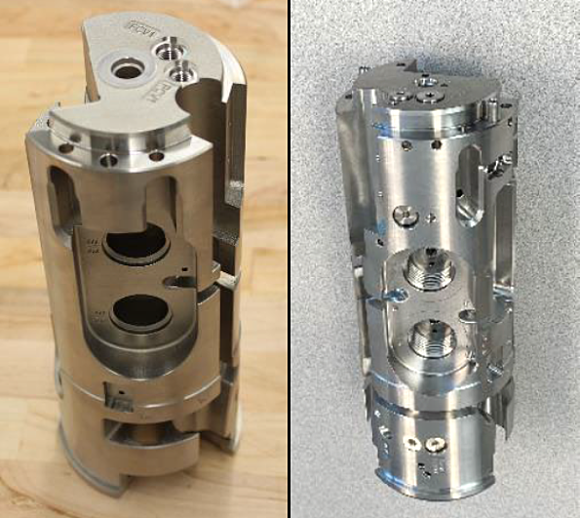Kinectrics and Burloak Technologies Advance Applications for Metal Additive Manufacturing to Provide a Broader Range of Supply Chain Options
Kinectrics and Burloak Technologies, two recognized leaders in Canada in their respective fields of nuclear lifecycle services and additive manufacturing , have demonstrated successful application of metal additive manufacturing (AM) for nuclear energy applications. Their partnership, which began in 2021, is focused on leveraging AM to provide fully tested, nuclear-grade components to address obsolescence in operational fleets and support emerging reactor technologies.
Their latest success involves the additive manufacturing of a hydraulic manifold, a complex, pressure-retaining high-grade steel component that was originally produced through conventional means. This part was designed and manufactured to meet the stringent mechanical and safety requirements of nuclear service environments, and to demonstrate a nuclear qualification path for Burloak’s metal AM process, marking a significant step toward the broader adoption of AM in the nuclear sector.
Obsolescence Meets Innovation
With many nuclear plants operating beyond their original design life and OEM supply chains diminishing, the challenge of component obsolescence is intensifying. Conventional manufacturing solutions often fall short due to unavailable tooling, long lead times, or insufficient documentation. Additive manufacturing offers a fundamentally different approach—digital, flexible, and capable of producing geometrically complex parts directly from CAD data with short turnaround times.
“Additive manufacturing enables on-demand production of replacement parts that are otherwise impossible to source,” said Jason Ball, VP/GM of Burloak. “We’re not only solving for obsolescence — we’re working with Kinectrics to help develop the framework for using the Additive Manufacturing (AM) process in the Canadian nuclear industry while creating new engineering options that meet and often exceed the performance of legacy manufacturing processes.”
Technical Highlights of the Hydraulic Manifold Qualification
The hydraulic manifold was produced at Burloak’s AS9100 and ISO 9001-certified facility using high-strength stainless steel [17-4 PH] and a laser powder bed fusion (L-PBF) process. The part includes internal passageways optimized for flow performance, benefiting from the geometric freedom that AM provides. Post-processing steps that were performed using Burloak’s in-house capabilities included NADCAP-accredited heat treatment, 5-axis CNC machining, ISO 17025-accredited lab testing, and advanced metrology.





